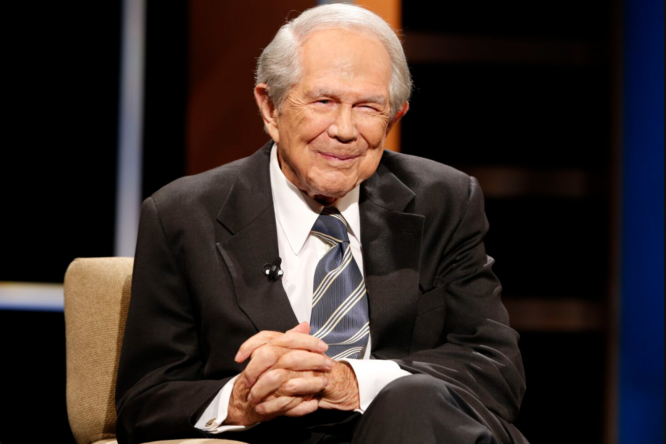Television and Pat Robertson’s folksy ministerial style united tens of millions of evangelical Christians and conservatively steered them.
His largest effect was marrying evangelical Christianity to the Republican party.
“The culture wars being waged today by just about all the national Republican candidates—that is partly a product of Robertson,” said veteran political analyst Larry Sabato, director of the University of Virginia Center for Politics.
Cable’s late 1970s surge expanded Robertson’s reach. In 1988, he stirred viewers into political action.
Next year, he founded the prominent Christian Coalition. Ralph Reed, who led the coalition in the 1990s and heads the Faith & Freedom Coalition, said he wanted to “influence and impact the trajectory of the Republican Party and turn it into a pro-life, pro-family party.”
93-year-old Robertson died Thursday.
After President Bill Clinton’s 1992 victory, the Christian Coalition helped fuel the 1994 “Republican Revolution” that gave the GOP control of the U.S. House and Senate.
Robertson, the son of a U.S. senator and Yale Law School graduate, blamed liberal movements for the 9/11 atrocities. He prayed to avert a hurricane from his Virginia base.
“Even Pentecostals, and I’ve known a lot, they’re not usually going that far,” said Grant Wacker, Duke Divinity School professor emeritus of Christian history.

Robertson was the first presidential candidate to seek Iowa’s evangelical Christian churches. He placed second in the Iowa caucuses, ahead of Vice President George H.W. Bush.
Bush won after Robertson backed him. Republican presidential candidates, including 2024 candidates, increasingly court Iowa evangelicals.
Reed cited evangelical Republicans like former Vice President Mike Pence and Sen. Tim Scott.
“It’s easy to forget when you’re living it every day, but there wouldn’t have been a single, explicit evangelical at any of those levels 40 years ago in the Republican Party,” Reed said.
After buying a bankrupt Portsmouth, Virginia UHF television station, Robertson launched the Christian Broadcasting Network in 1961. The 700 Club began production in 1966.
Robertson promoted “The 700 Club,” a news and chat show that featured average people talking about finding Jesus Christ, by mixing evangelism with family-friendly repeats.
He didn’t only fundraise like other televangelists. David John Marley, author of “Pat Robertson: An American Life,” says Robertson aired secular broadcasts and advertised.
Marley stated he turned televangelism a business.
Robertson spoke to the camera like a pastor, not a preacher.
“There were only 10 channels and one of them was Pat,” Reed said of late 1970s cable TV.
Wacker of Duke Divinity School compared his appeal to that of Billy Graham, who died in 2018 after a career that shaped American religion and politics.
“He really showed a lot of pastors and other Christians across this country how impactful media can be—to reach beyond the four walls of their churches,” said Troy A. Miller, president and CEO of the National Religious Broadcasters.
Jeffrey K. Hadden, Robertson’s biographer, told The AP that Robertson’s masterstroke was requiring 3 million supporters to sign petitions before running for president in 1988. The strategy armed Robertson.
Hadden told the AP in 1988 that he wanted people to labor for him, pray for him, and provide money.
Marley had full access to Robertson’s presidential campaign records as a graduate student at George Washington University in the late 1990s.
Marley claimed Robertson spent at least two years preparing for his presidential run.
Robertson enjoyed playing “kingmaker” between Republican leaders like Ronald Reagan and evangelical Christians.
Marley stated George W. Bush was able to hold the chat alone.
Marley noted in his 1998 conversation with Robertson that the pastor was satisfied with his failures and successes.
Marley stated he saw someone at peace.
Pittsburgh-based Smith and Los Angeles-based Bharath reported. Nashville and New York AP reporters Holly Meyer and David Bauder contributed.




